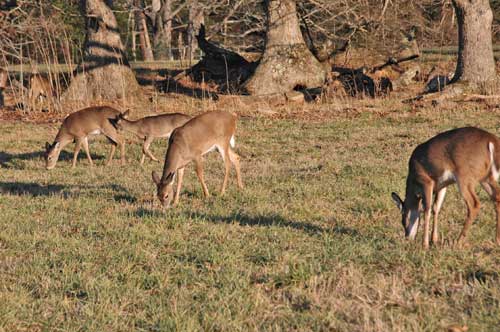Bob Walker | Mossy Oak ProStaff

On the second day of Alabama’s bow season, I decided to take my wife Alice bowhunting. She had never taken a deer with a bow, and she had been practicing with her bow and getting ready for bow season. We had planned to hunt the 2016 bow season, but the weather was so hot, the woods were so dry, and we got so busy at the deer-processing store that I didn’t have a chance to take Alice bowhunting. So, we decided that I’d take her on the second day of the 2017 bow season.
Alice Walker with archery doeI had a small food plot with a number of water oak acorns around it. The trees around this green field historically dropped their acorns during early bow season. I had put a stand up on the corner of that field where I felt certain the wind would be right to hunt on the day I took Alice. I helped Alice get into her tree stand, and I went to another stand to hunt.
About an hour before dark, I got a text from Alice that said, “I think I hit a doe perfectly.”
Immediately, I left my stand to go help Alice find the deer she had arrowed. When we went to the spot where Alice had arrowed the doe, we found her arrow and it was covered in blood. We had a good blood trail, and we found the deer about 80 yards from where Alice had arrowed the deer. When she saw her doe stone cold dead, she really got excited. I was probably as excited as she was if not more excited, because this was her first deer to take with her bow.
Harvesting surplus does is just a good deer management tool. The browse on a piece of property, even with green fields planted, only can support a certain number of deer. If you don’t remove a portion of the reproductive segment of your herd, once the herd reaches the carrying capacity of the land, your bucks and does can’t grow to their full potential each year. That’s the reason we encourage people to take does during bow season. Harvesting does at the beginning of bow season also helps the archer get more comfortable with having deer in close and making accurate shots. Then later in the season, when the archer wants to take a buck, he or she is better prepared.


























